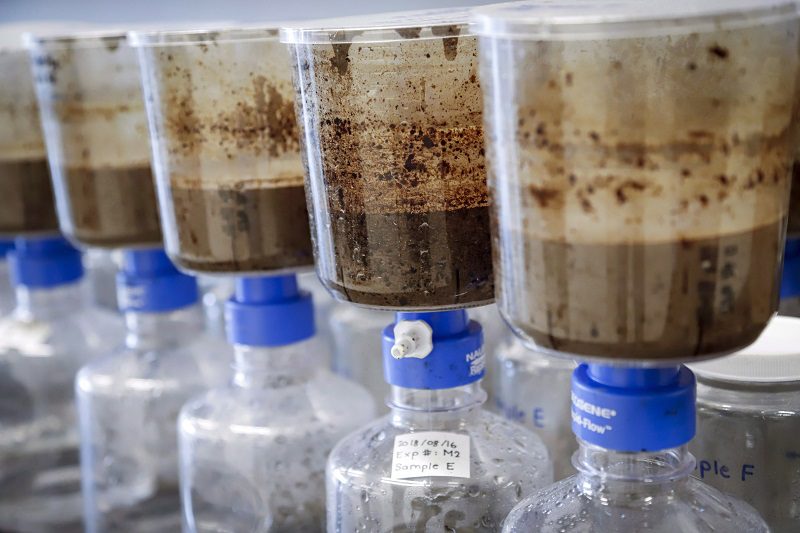Alberta regulator says Imperial Oil faces more water problems at oilsands mine

The Alberta Energy Regulator has warned Imperial Oil about more wastewater problems at its Kearl oilsands mine in northern Alberta.
The regulator has issued a notice of non-compliance to the company after chemicals associated with oilsands tailings were found at an off-site well at levels that exceed provincial guidelines.
“In light of the exceedance of sulphate levels in the off-site well, we have issued a notice of non-compliance to Imperial for failing to control industrial runoff,” says a notice from the regulator obtained by The Canadian Press.
“This is not related to a tailings pond or the (environmental protection order) issued against Imperial in February.”
The notice says sulphates have been detected in a well near a mine overburden disposal area that is 100 metres from the Muskeg River, a tributary of the Athabasca River. Data from the provincial oilsands monitoring program using samples from the Muskeg River show sulphates measured suddenly spiked by a factor of roughly 10 in the first three months of 2023.
The chemicals are naturally occurring and are not particularly harmful themselves. They are tracked because they are often found in high concentrations in tailings, which are toxic.
In an emailed statement, Imperial said the results were reported to the regulator and shared with communities.
“This is part of the routine regulatory process, and is not associated with the seepage around the external tailings area (ETA) or environmental protection order (EPO),” it said.
The regulator said in a statement that Indigenous communities that are close to the Kearl site have been informed.
It added that while there is a communications restriction in place during the period leading up to the May 29 provincial election, the regulator has received special permission from the chief electoral officer to “continue communicating directly with Indigenous communities and the Regional Municipality of Wood Buffalo on matters related to Imperial’s Kearl site.”
Imperial is using sulphate measurements to outline how far seepage from one of its tailings ponds at Kearl has spread.
The company is still dealing with issues created by those releases.
In May 2022, workers discovered discoloured water seeping near a tailings pond on the north of the mine site. That substance was later found to be groundwater mixed with tailings.
The following February, another 5.3 million litres of wastewater escaped from a containment pond, prompting the regulator to issue an environmental protection order.
Area First Nations and responsible governments were angered they weren’t kept informed about the investigation into the first release. Three probes have been launched into that nine-month delay: one by a House of Commons committee, one by Alberta’s information commissioner and one by the regulator’s board of directors.
Imperial says it has largely cleaned up the containment pond release. It has installed pumps, drainage trenches and monitoring wells to keep the seepage from spreading further, although it still continues.
The regulator has told Imperial it must now provide a plan to delineate the new problem and bring its operations back into compliance.
Feature image: Tailings samples are being tested during a tour of Imperial’s oil sands research centre in Calgary, Alta., Tuesday, Aug. 28, 2018. Recent leaks of toxic tailings from northern Alberta oilsands mines have revealed serious flaws in how Canada and Alberta look after the environment, observers say. THE CANADIAN PRESS/Jeff McIntosh



